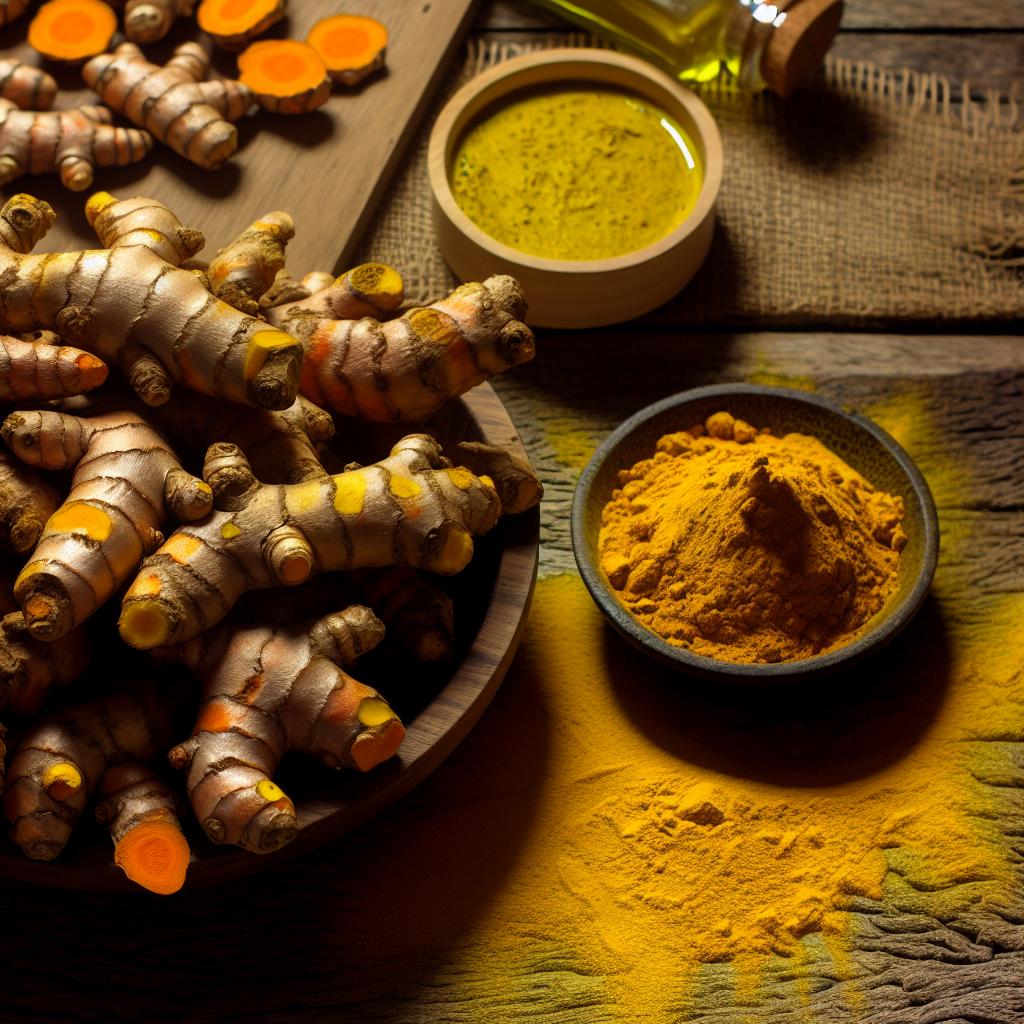
Introduction to Turmeric
Turmeric, scientifically known as Curcuma longa, is a perennial plant that has long been a vital component of South Asian culture, especially within countries like India and Indonesia. It holds prominence not only in the culinary sphere but also in traditional medicine and religious practices. This extensive history reflects its importance and versatility in various applications.
Cultivation and Characteristics
Turmeric thrives in tropical climates which offer abundant rainfall, necessary for its optimal growth. This plant typically reaches about one meter in height and is distinguished by its long, oblong leaves. The rhizomes, which are akin to an underground stem, are the most valuable part of the plant. These rhizomes undergo processes of harvesting, boiling, drying, and grinding to produce the familiar yellow-orange powder that is widely used.
Nutritional Profile
Turmeric’s nutritional content is centered around its active compounds and multitude of nutrients. The primary compound, curcumin, is predominantly recognized for its potential anti-inflammatory and antioxidant properties. Besides curcumin, turmeric is nutritionally diverse, containing:
Vitamins: The presence of vitamins C, E, and K indicates its contribution to immune support and other body functions.
Minerals: Iron, potassium, and manganese are integral for maintaining essential physiological processes such as oxygen transport, electrolyte balance, and bone formation.
Fibers: As a dietary fiber source, turmeric aids in promoting healthy digestion and regular bowel movements.
Health Benefits
Science continues to explore and validate the numerous health benefits associated with turmeric consumption. Below are some focal areas:
Anti-inflammatory Properties
Curcumin’s capability to combat inflammation has been a significant subject of interest in scientific research. Its potential benefit in managing inflammatory diseases, such as arthritis, offers promising therapeutic avenues. The anti-inflammatory effect could possibly reduce the dependency on non-steroidal anti-inflammatory drugs (NSAIDs) for chronic inflammation patients.
Digestive Health
Traditionally, turmeric is valued for its digestive-enhancing properties. It is believed to stimulate bile production in the gallbladder, aiding in digestion, especially of fats. This attribute may offer a natural remedy to improve digestion efficiency and address mild digestive issues.
Antioxidant Effects
Curcumin acts decisively as an antioxidant, neutralizing free radicals that can lead to oxidative stress and consequently, cell damage. By mitigating oxidative stress, curcumin contributes to the preservation of cellular integrity, which supports overall health, including potential benefits in anti-aging and disease prevention.
Heart Health
A lesser-known aspect is turmeric’s possible impact on cardiovascular health. Curcumin’s role in enhancing endothelial function (lining of blood vessels) and reducing inflammation and oxidation may be beneficial for heart health. These effects might help in lowering risk factors associated with heart diseases, although further studies are necessary for conclusive evidence.
Culinary Uses
Across various cultures, turmeric stands as a fundamental spice, known for its earthy aroma and vibrant pigmentation. It plays a critical role in many culinary traditions, particularly within Southeast Asian cuisines. Its use extends beyond adding flavor; it enriches dishes with its beneficial properties. Turmeric is an essential component in numerous spice blends, such as curry powder, and features in diverse recipes, ranging from curries to soups.
In beverages, turmeric has sparked interest, particularly in concoctions like turmeric tea and “golden milk.” These drinks not only provide comfort and warmth but also an opportunity to incorporate turmeric’s nutrition into daily routines. The age-old practice of consuming these beverages is being revived in modern-day wellness circles, emphasizing their place in health-conscious diets.
Storage and Usage
For those using turmeric, understanding its proper storage is crucial to maintain its flavor and effectiveness. Turmeric powder, known for its prolonged shelf life, should be stored in a cool, dry place, away from light and moisture, to preserve its potency. Fresh turmeric root necessitates refrigeration; if stored correctly, it remains usable for a few weeks.
Utilizing turmeric requires moderation, balancing its strong flavor with other culinary elements to enhance dishes without overwhelming them. Often, turmeric is sautéed with other spices to release its flavor and unlock its full potential within a recipe.
Conclusion
The multifaceted applications of turmeric underscore its value through centuries. Historically, it has earned its place as a staple spice and a revered medicinal component. While ongoing research seeks to further understand and verify its health benefits, turmeric’s established uses in both culinary and medicinal fields affirm its importance and potential.
For those interested in exploring turmeric further, resources such as scientific journals and dietary research offer in-depth insights. Manufacturers and users are encouraged to consult these studies to broaden their understanding of turmeric’s applications and advantages within a modern context. Trusted educational websites and university research publications provide valuable resources for comprehensive studies on turmeric and its benefits, aiding informed decision-making and use in various domains.

